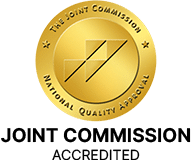Our Medication Assisted Treatment (MAT) Program is aimed at helping men and women that are addicted to heroin or prescription opioids.
When it comes to recovery from addiction, you can’t do it alone. Support from counselors and therapists in the form of process groups and individual counseling may not be enough. For clients that experience opioid withdrawal symptoms and are at high risk for relapse, our Medication Assisted Treatment (MAT) Program is often a suitable option.
Our clinical team uses medication to help manage opioid dependence while our clients receive intensive daily therapy at our day or night treatment program. We’ve seen great success in using this effective treatment approach for chronic drug addicts that don’t respond well to other levels of care.

Table of Contents
- 1 MEDICATION-ASSISTED TREATMENT (MAT)
- 2 DEFINITION AND PURPOSE OF MAT
- 3 COMMON MEDICATIONS USED IN MAT
- 4 THE BENEFITS OF MAT
- 5 CRITICISMS, BARRIERS AND MISUNDERSTANDINGS OF MAT TREATMENT
- 6 HOW MAT INTEGRATES WITH BEHAVIORAL THERAPIES
- 7 ELIGIBILITY AND STARTING MAT
- 8 MAT IN SPECIAL POPULATIONS
- 9 FUTURE OF MAT: RESEARCH AND ADVANCEMENTS
- 10 CONCLUSION
- 11 RESOURCES
MEDICATION-ASSISTED TREATMENT (MAT)
Did you know that almost 75 percent of drug overdose deaths are caused by Opioids as of 2020, according to the CDC? In 2019, 50,000 people tried heroin for the first time, 10.1 million people misused a prescription opioid, and 1.6 million were diagnosed with opioid use disorder. Of course, you may be wondering how this started. It started in the late 1990s when the drug companies convinced doctors that opioids were not that addictive and that they should prescribe them more frequently to help individuals with pain. While recent data has proven that opioids are addictive and steps have been taken to limit their availability, many people still need help overcoming their dependency. The good news is that MAT therapy can help people stop using opioids.
DEFINITION AND PURPOSE OF MAT
Medication-assisted therapy involves the use of prescribed medications to help reduce withdrawal symptoms and cravings. When it is used in conjunction with therapy and counseling, including individual and group therapy, motivational interviewing, cognitive behavioral therapy, and dialectic behavioral therapy, MAT is successful in helping people get and stay sober.
COMMON MEDICATIONS USED IN MAT
Methadone
Methadone is a long-acting opioid. Its brand names include DISKETS®, Methadose®, and Dolopine®. It helps control withdrawal symptoms and cravings while stabilizing the hormones that were disrupted by illicit opioid use. The medication prevents the dramatic highs and lows that are caused by using illicit drugs. When used in conjunction with therapy and counseling, methadone can help reduce the psychological effects of opioid use. Methadone is typically given to individuals once or twice a day, depending on their needs. It’s also important to note that methadone must be administered via a registered Opioid Treatment Program (OTP).
Buprenorphine
Buprenorphine is another medication that’s used to treat opioid use disorder. The most common brand names are Suboxone® (buprenorphine and naloxone) and Subutex®, but there are others, including Buprenex® Butrans® and Sublocade®. Buprenorphine helps reduce cravings and withdrawal symptoms while preventing the dramatic highs and lows of illicit opioid use. It can be prescribed by any clinician and taken at home because it is a partial opioid antagonist. The exception is the long-acting injection, which must be administered by the clinician.
Naltrexone
Naltrexone is prescribed under the brand name Vivitrol. It is an opioid antagonist. This means that it prevents opiates from binding to the opioid receptors in the brain. Unlike the other two options, naltrexone does not help with withdrawal symptoms. Instead, it only helps reduce cravings. This medication can be taken daily at home or given as a long-term injection.
Disulfiram and Acamprosate
Disulfiram and Acamprosate are used to treat alcohol use disorder. Disulfiram is used to treat individuals who are at the very beginning of their recovery journey and suffer from chronic alcoholism. Individuals take one tablet of Disulfiram per day. If the individual takes Disulfiram and drinks alcohol, it results in headaches, nausea, and vomiting. Individuals take one tablet three times a day. It helps with cravings but not withdrawal symptoms.
THE BENEFITS OF MAT
Medication-assisted treatment can help improve the survival rates of those with substance use disorder. It does this by reducing the risk of an opioid overdose and lessening the chances that the individual would contract HIV and hepatitis C. In addition, MAT benefits individuals by:
- Reducing the desire to take the opioid.
- Reducing withdrawal symptoms.
- Decreasing crime rates.
- Decreasing illicit drug use.
- Lowering the risk of a relapse.
- Increasing their participation in treatment.
- Increasing the odds that he or she will attain a job.
CRITICISMS, BARRIERS AND MISUNDERSTANDINGS OF MAT TREATMENT
MAT therapy isn’t widely understood by some medical professionals and the general population. For this reason, individuals who wish to participate in the treatment may face barriers, misunderstandings, and criticisms. In fact, the primary criticism of MAT treatment is that it replaces one drug with another type of drug. While this is technically true, the statement leaves out the intricacies. MAT therapy for opioids and alcohol can be likened to the MAT treatments offered to smokers. When a smoker wishes to stop smoking, they often choose a nicotine replacement therapy to help them with the withdrawal symptoms and cravings. Once they are fully free of cigarettes and on the nicotine replacement therapy, they slowly wean themselves off the therapy until they are completely nicotine-free.
This is the same process that is used for opioid use disorder. The individual who has a dependency on opioids stops taking their opioid of choice and starts taking the prescribed medication. This helps the individual by reducing their withdrawal symptoms and cravings. MAT, along with therapy, helps the individual come to terms with their addiction, address any underlying factors, and move forward in their new sober life. As the individual heals, they are slowly tapered off of their MAT medication.
Individuals may also face certain barriers. The primary barrier is a lack of understanding and training in MAT therapies. Many doctors and nurses aren’t trained in MAT during medical school. They also fear that their practice will be negatively impacted if they start prescribing methadone and buprenorphine.
Finally, many of the treatment centers that provide MAT treatment have long waiting lists, and many of the primary care doctors who are approved to prescribe MAT medications don’t have the capacity to add any patients to their practice. This can be a significant barrier to getting good quality treatment.
HOW MAT INTEGRATES WITH BEHAVIORAL THERAPIES
MAT is highly effective at reducing relapses and helping people get and stay sober for the long term when it’s combined with therapy and counseling. This is because MAT plus therapy creates a comprehensive approach that deals with both the psychological and physiological aspects of chemical dependency.
Once individuals are free from their physical dependency, they are still susceptible to their mental health or psychological dependency, even months or years after getting sober. This is because they could be susceptible to certain social and environmental triggers, including sudden stress, accidentally traveling through a neighborhood where they used to use, or running into old acquaintances that still use drugs or alcohol.
To combat the social, environmental, and psychological temptations, behavioral therapies are often combined with MAT therapy. These include cognitive-behavioral therapy, contingency management, and motivational interviewing.
- Cognitive-Behavioral Therapy – Helps individuals develop healthy coping strategies for everyday living. It does this by teaching the individual how to identify unhealthy thoughts and behaviors and to change those thoughts and behaviors to something that is productive and beneficial.
- Contingency Management – This therapy uses a system of rewards and recognition when the individual reaches certain milestones, attends all of their therapy sessions, and passes their drug tests.
- Motivational Interviewing – Many people are hesitant when it comes to change. Motivational interviewing helps individuals focus on the reasons they want to quit using while addressing the concerns they may have about changing their lifestyle.
ELIGIBILITY AND STARTING MAT
If you have a substance use disorder for alcohol or opiates, you may be eligible to receive MAT therapy. The process starts with a thorough assessment in order to determine if you have substance use disorder (SUB). Individuals who are diagnosed with SUD are typically eligible to receive MAT therapy. If you are approved to receive medication-assisted therapy, you will be given information on the medication, and an individualized treatment program will be developed for you. Once you consent to the medication and treatment plan, your MAT therapy will begin. This is called the induction phase, and it’s when you begin taking your medication. It’s important to understand that you will be closely monitored, and your MAT therapy will be adjusted based on your response to the medication and your individual needs.
MAT IN SPECIAL POPULATIONS
Certain individuals may face barriers to treatment and need special considerations when being evaluated for MAT therapy. These populations include pregnant women, adolescents, homeless people, and individuals who live in rural locations.
- Pregnant Women – Substance use disorder poses risks to the woman and unborn child. Therefore, the practitioner needs to take into consideration the health of the female and the baby when prescribing MAT therapy.
- Adolescents – Individuals who are under the age of 18 may need parental consent to begin treatment, and it is vitally important that the program address the adolescent’s mental and physical development during the treatment.
- Homeless People – Homeless individuals with substance use disorder may find entering an MAT program challenging due to the lack of an address. Programs that cater to homeless populations should also address housing instability and possible transportation needs.
- Rural Locations – Individuals who live in rural locations may have limited treatment options or long commutes to treatment centers. These individuals may benefit from mobile MAT and telemedicine.
FUTURE OF MAT: RESEARCH AND ADVANCEMENTS
In the future, MAT therapy could be used to help people with a range of dependencies, not just alcohol and opioid addiction. The next generation of medications should begin to help people with dependencies on stimulants, including cocaine and methamphetamine. There is also research being done to make medications more precise. This means that the individual’s DNA, biological, and psychosocial profiles will be taken into consideration when prescribing medications and determining dosages and frequency of those doses. In the meantime, efforts should be focused on providing care to underserved populations, like individuals located in rural areas and the homeless.
CONCLUSION
If you’re struggling with a dependency on opioids or substance abuse disorder or looking for treatment of opioid use disorder related, MAT therapy addiction treatment, along with counseling, can help you in the detoxification process safely and move forward to lead a sober lifestyle.
Please contact Recreate Life Counseling for additional information about Medication Assisted Treatment near you.



